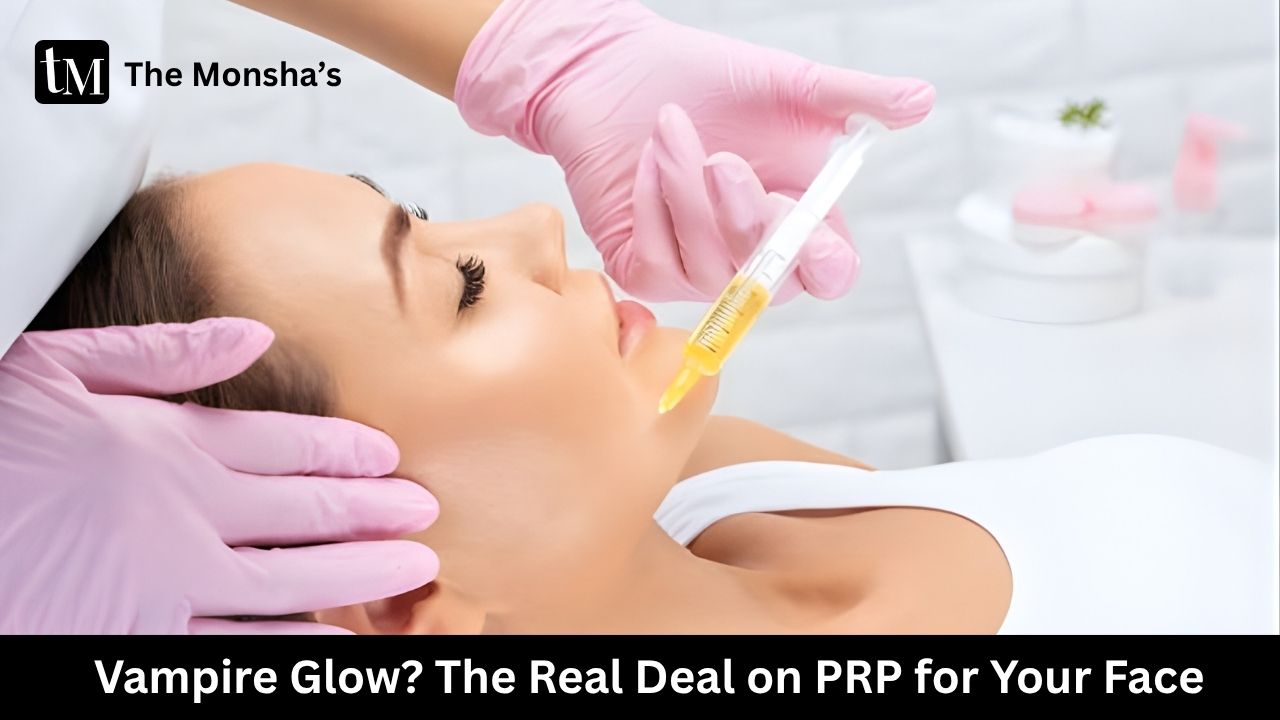
“Khoon chala hai… par glow bhi laaya hai…” 🎶(Yes, my skin blogging life has reached that point where Bollywood songs about khoon feel relevant 😅).
We’ve all seen celebs on Instagram with red-tinged faces after a “vampire facial” and wondered: “Is it magic, is it madness, or just marketing?” As your slightly tired, very real beauty blogger, I’m going to break down PRP treatment for the face — what it is, how it works, its benefits, risks, and recovery tips. Because before you literally spill blood for glow, you should know what you’re signing up for.
PRP = Platelet Rich Plasma. A small amount of your blood is drawn, spun in a centrifuge to separate plasma rich in platelets (growth factors), then applied or injected into your face.
Dermatologists call it “liquid gold” because platelets release growth factors that stimulate collagen, improve tissue repair, and accelerate healing. When combined with microneedling (“vampire facial”), results can be even more noticeable because channels in the skin help PRP penetrate better.
PRP stimulates fibroblasts to produce collagen and elastin, leading to firmer, smoother skin. Great for early ageing signs.
Helps reduce fine lines, enlarged pores, mild scars, and uneven tone.
Growth factors can remodel scar tissue over time.
Because it’s your own plasma, the risk of allergic reaction is minimal compared to fillers or synthetic injectables.
Dermatologists note: Results are subtle and cumulative, not overnight.
A vial of your blood is drawn and spun to isolate the platelet-rich plasma.
PRP is either injected with fine needles or applied topically during/after microneedling.
One session takes about 45–60 minutes. Most people need 3–4 sessions spaced a month apart for best results.
Mild pricks, slight stinging; numbing cream reduces discomfort.

Usually within a few weeks; full benefits build over several sessions.
With numbing cream, it’s tolerable — mild pricks, some stinging.
Yes — often paired with microneedling or lasers. Ask your dermatologist for a plan.
With maintenance, effects can last up to a year or more.
Yes — PRP is generally safe for all skin types and tones.
PRP isn’t a gimmick, but it’s also not magic. Think of it as regenerative skincare — using your body’s own growth factors to slowly improve texture, firmness, and scars. It’s subtle, cumulative, and safest in skilled hands.
If you’re considering it, do your homework on clinics and manage expectations. “Khoon apna hai, par clinic bhi top hona chahiye.” 🧖♀️💉
Glow patiently. The results are worth it.